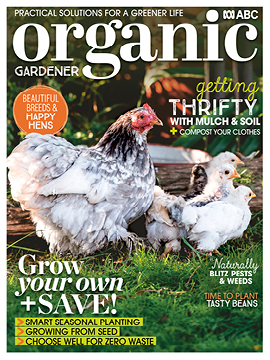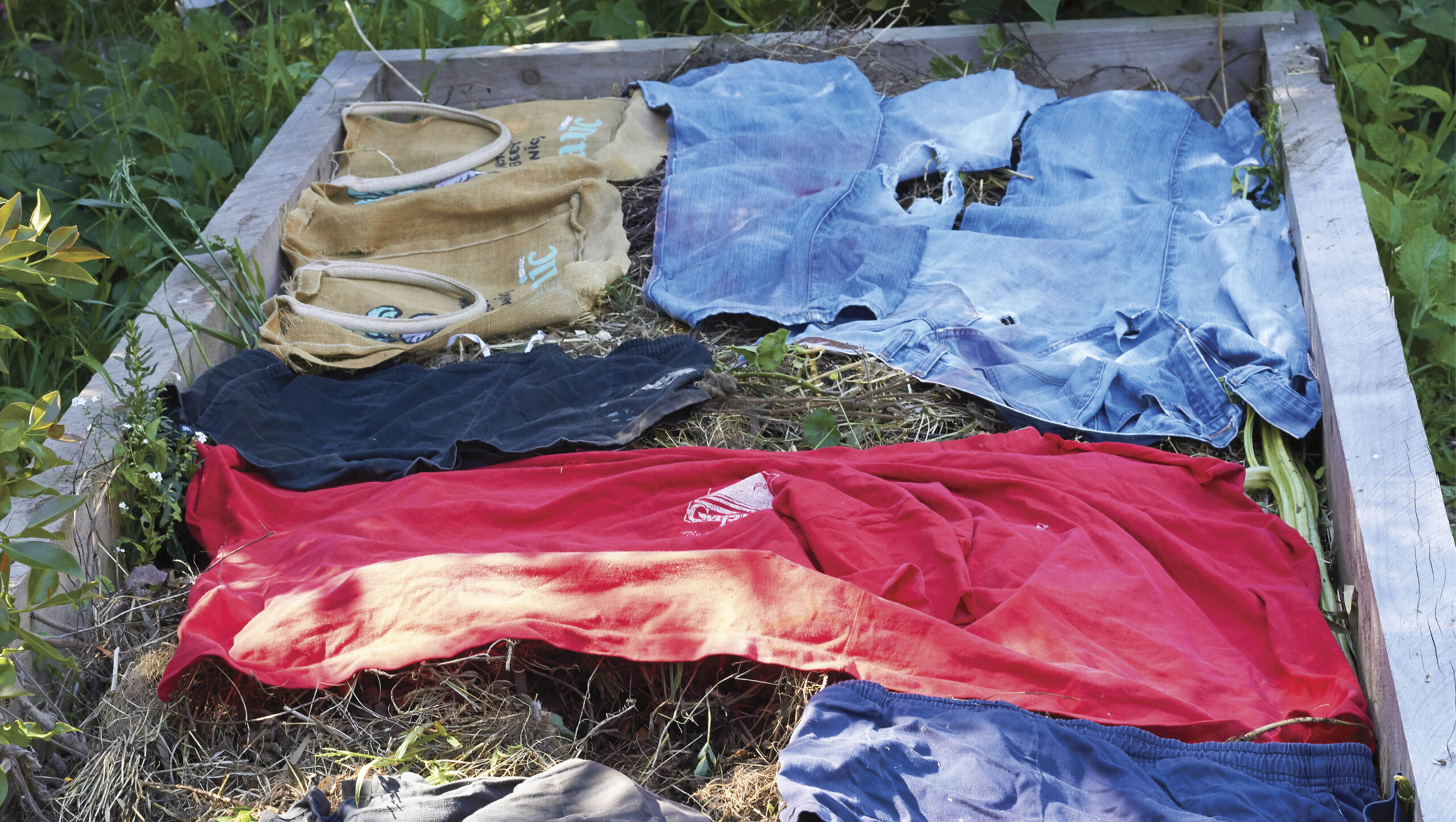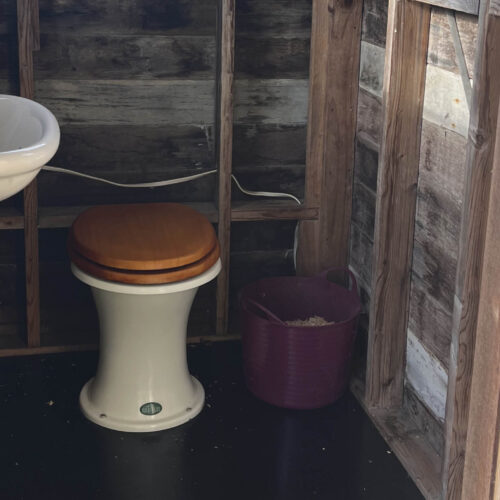How to turn old clothes into compost
2023-11-13T01:51:23+11:00
Tonnes of textile waste is generated each year in Australia - we can help keep it out of landfill by using old clothes in our garden.
You don’t need to wait for industry action to make a change when it comes to textile waste. Aside from buying pre-used clothes, clothes swapping and just not buying unnecessarily, there is lots you can do in your own home and garden. For example, clothes can be creatively repurposed into dusters and rags. Have some worn out woollen and cotton knitted jumpers? They can be unpulled and reknitted into clothes and rugs or for yarnbombing. My favourite way of re-using clothes made from natural fibres, though, is in the garden through compost. For my family, as avid gardeners doing lots of outside work, we wear many of our clothes until they are too tattered to wear any more.
Worm farm blankets
Jeans full of holes; ripped, torn and stained T-shirts and unravelling jumpers all make excellent worm farm blankets. I love watching as the worms slowly devour them until there are more holes than fabric and then finally only a couple of labels, a zipper or some studs are left that need to go in the rubbish. Learn more about worm farms here.
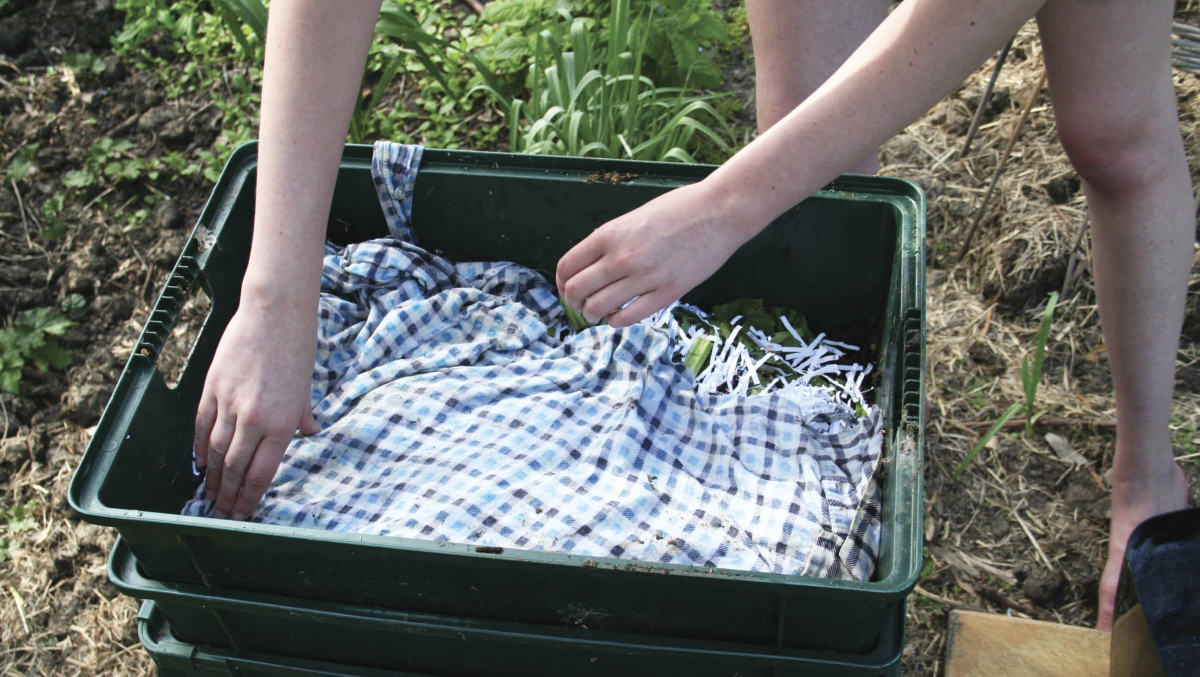
Fertiliser sausages
You can also use clothes to make fertiliser sausages. If you want to direct some extra food to a specific spot, use manure, compost or worm castings to fill up the sleeve of an old shirt, or for a bigger plant the legs of your old jeans. Then, wet them well and place along the drip line of a fruit tree, or in a line between vegie crops. Cover with mulch, keep them moist and they will slowly feed your plants until the fabric and manure breaks down completely and rots back into the soil.
Plant ties
I also cut T-shirts into ties for plants, especially tomatoes. They last a few years, and then go into the compost. Old tights or pantyhose can be used in the same way, last for a long time, but because of their synthetic fibres, usually need to go into the rubbish when you’ve finally finished with them.
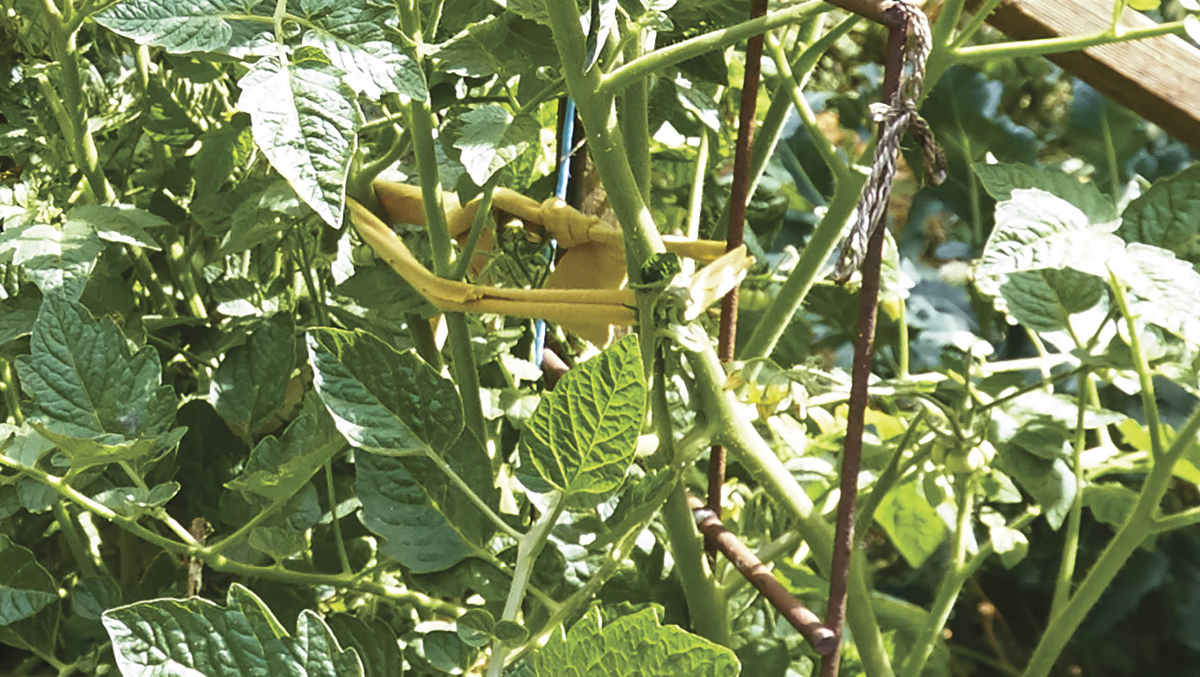
Weed barriers
Probably the best way of re-using suitable clothes is like newspaper or cardboard, to prevent weeds from sprouting and keep moisture in the ground. They work especially well when spread over wet ground with straw or lucerne mulch over the top. I’ve used cotton jeans and T-shirts, sheets, pillow cases, hessian bags and old woollen jumpers in this way. In one summer season they gradually get broken down and all but disappear. Last year there was only a waistband and some synthetic fibres to go into the rubbish.
Penny Woodward’s tips first appeared in our Early Spring 2022 issue (OG 135).
